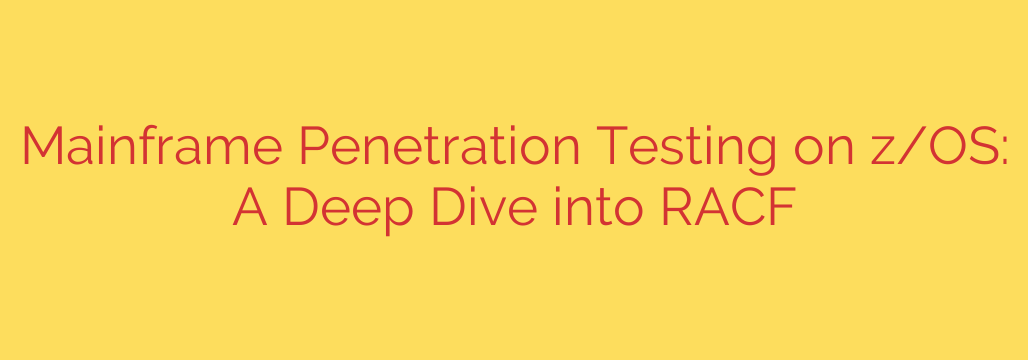
Securing critical mainframe systems is paramount in today’s digital landscape. While distributed systems often get the spotlight, the z/OS mainframe environment remains the backbone for many organizations, handling massive volumes of sensitive data and mission-critical applications. Ensuring the security posture of these powerful machines requires specialized attention, and penetration testing is a vital component of that strategy.
Unlike testing typical server environments, mainframe penetration testing involves navigating the unique architecture and security mechanisms of z/OS. A key focus area in this process is the Resource Access Control Facility (RACF). RACF is a robust security manager integral to z/OS, controlling access to virtually every resource, including datasets, programs, terminals, and system commands. Its configuration directly dictates the security perimeter of the entire system.
A deep dive into RACF during penetration testing aims to identify potential weaknesses and misconfigurations that could be exploited. Common vulnerabilities often stem from:
- Overly permissive access controls: Granting excessive privileges to users or groups.
- Weak password policies: Allowing simple, predictable, or default passwords.
- Improperly defined resource profiles: Gaps or errors in how resources are protected.
- Unused or outdated user IDs and groups: Leaving potential backdoors open.
- Lack of monitoring and auditing: Failing to detect suspicious activity.
- Poorly secured administrative accounts: Compromise of these accounts can lead to full system control.
Penetration testers employ specific techniques and tools tailored for the z/OS environment to probe these areas. This includes attempting to:
- Enumerate users and groups.
- Test password strength and attempt brute-force or dictionary attacks.
- Identify reachable resources and test access permissions.
- Look for default or well-known accounts.
- Analyze RACF database configurations (though direct access is restricted, insights can be gained).
- Attempt privilege escalation.
A thorough RACF security assessment involves examining policies, profiles, user attributes, and group memberships. It’s not just about finding technical flaws but also evaluating the effectiveness of security administration practices. Are procedures in place for managing access? Is the principle of least privilege being followed?
The goal of z/OS penetration testing focusing on RACF is to provide actionable intelligence. The findings help organizations understand their real-world exposure, prioritize risks, and implement necessary controls. Remediation steps might include tightening access rules, implementing stronger password standards, cleaning up outdated entries, and enhancing security monitoring.
Regular, specialized mainframe penetration testing is indispensable for maintaining a strong security posture on z/OS. By specifically targeting and thoroughly assessing the configuration and effectiveness of RACF, organizations can proactively identify and mitigate risks, safeguarding their most valuable assets from potential breaches and ensuring regulatory compliance. Don’t overlook the security of your mainframe; it’s a critical step in a comprehensive defense strategy.
Source: https://securelist.com/zos-mainframe-pentesting-resource-access-control-facility/116873/








